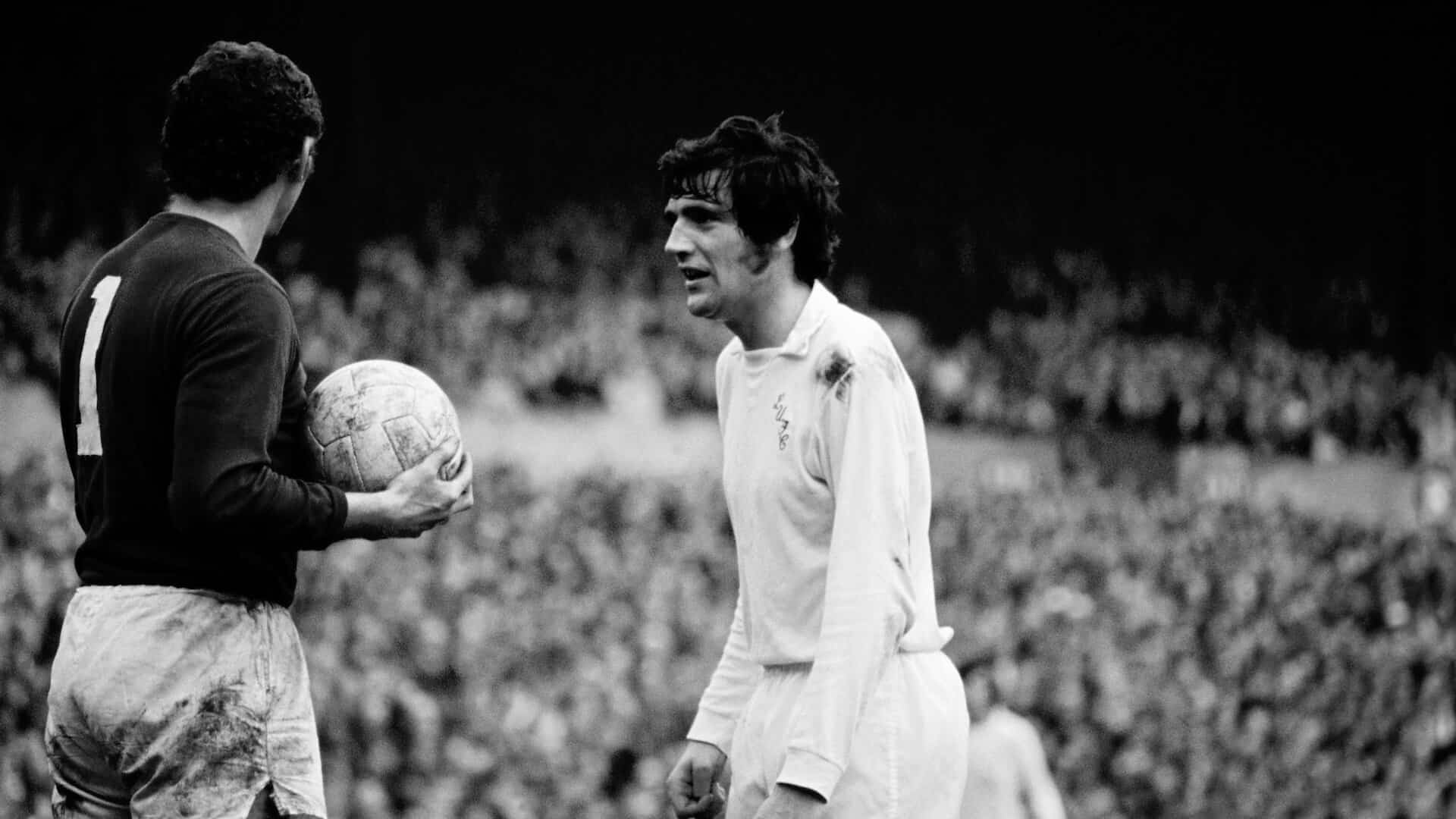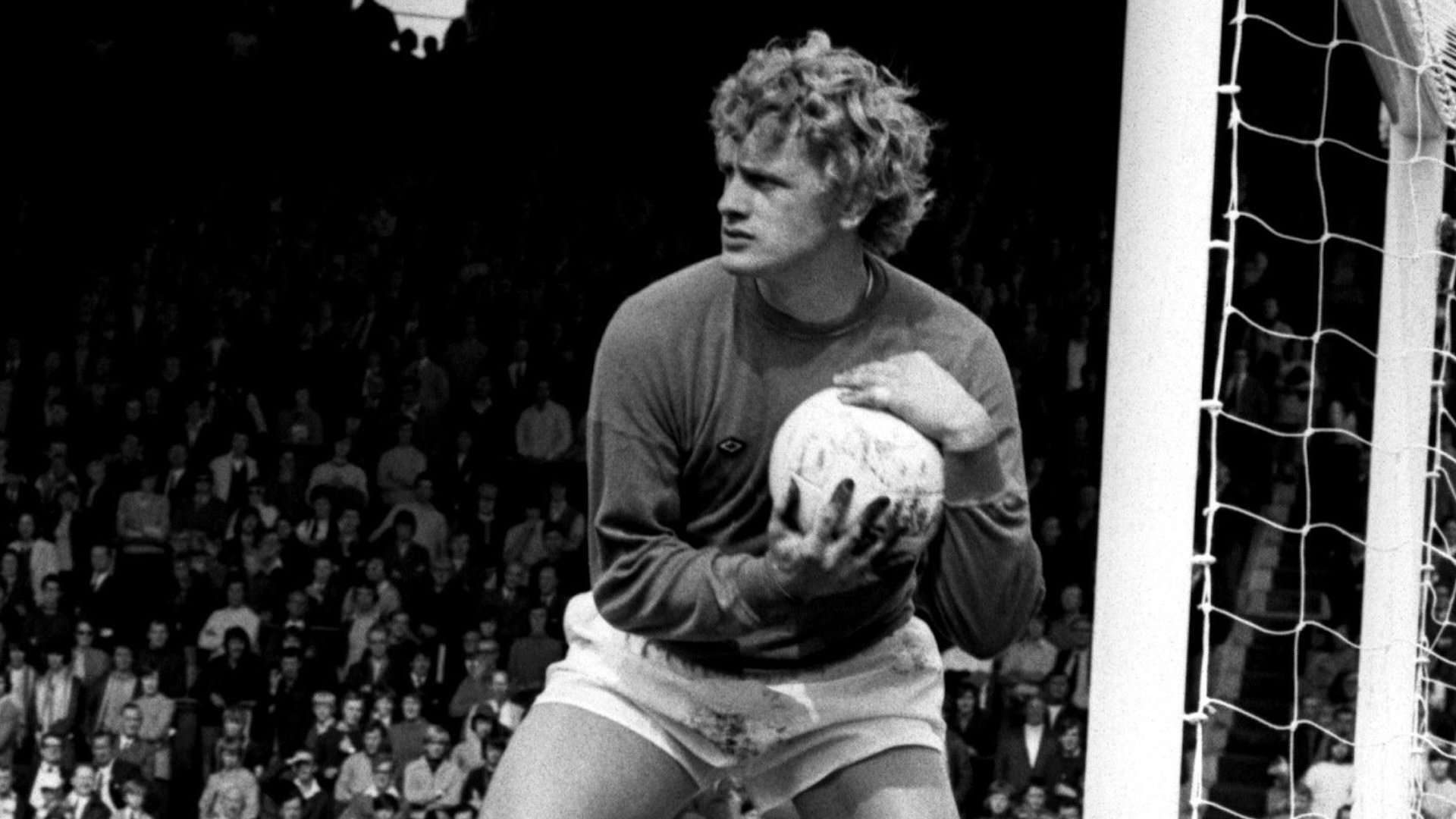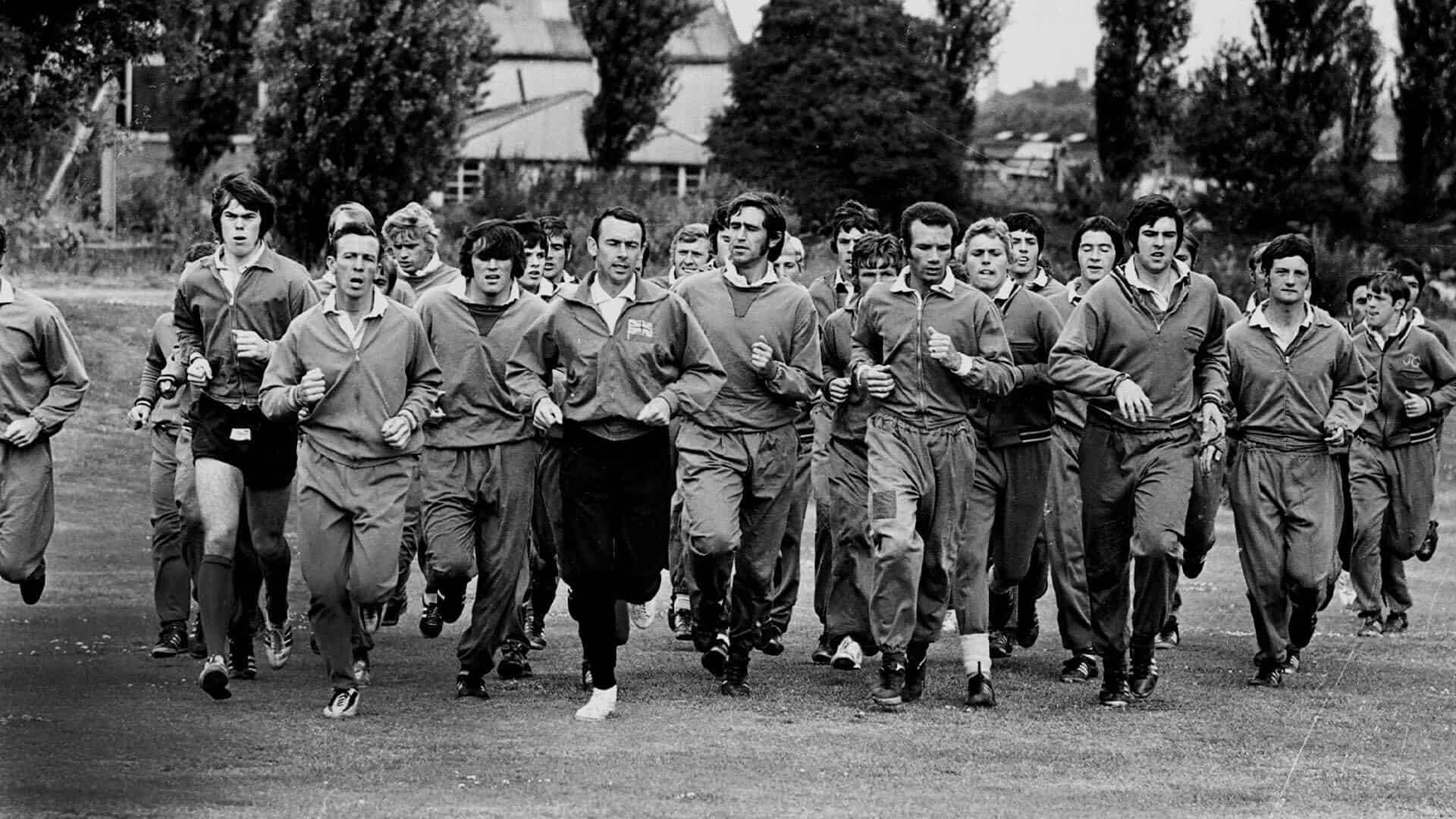Limited Time Discount! Shop NOW!

Don Revie was often derided for his superstitions, yet as the Leeds and Liverpool canal froze over ahead of United’s trip to Anfield in the FA Cup fourth round, newspapers were desperately searching for omens that said Revie’s side could be beaten.
Liverpool were 10th in the First Division, Leeds 2nd. United had recently gone top, albeit only for a week, before Tottenham won 1-0 at Elland Road to inflict their first defeat since November. Spurs showed Leeds could be vulnerable, but Liverpool were pinning their hopes on a flawed statistical logic. Leeds had already done the double over Liverpool in the league, Peter Lorimer scoring the only goal at Elland Road in September, Allan Clarke and Mick Jones securing a 2-0 win at Anfield on New Year’s Day. United were the only side to win at Anfield in Liverpool’s last fifty home fixtures — they had done it twice, also triumphing there in the previous season’s Fairs Cup semi-final. Sure, Leeds were the better team, but Liverpool Echo journalist Chris James suggested the Reds could rely on ‘a twist of fate that rarely allowed a team to beat another three times in a season.’
Liverpool boss Bill Shankly shared James’ optimism. Shankly spoke of the “great respect” the two clubs had for each other, spending the previous decade battling from rivals in the Second Division to title challengers in the First. But when asked about Leeds postponing their Central League reserve fixture at Elland Road on cup weekend to preserve the pitch for a potential replay with Liverpool, Shankly snorted, “What replay?”
Scratch beneath the surface, and the previously dubious press were starting to begrudgingly appreciate Leeds. James aimed a dart, calling them ‘the best runners-up in the business’, but also wrote: ‘Although Manchester City currently head the First Division, there is little doubt that Leeds are the best team, in all sense of the word, in the country at the minute.’ There was even a reappraisal of Norman ‘Bites Yer Legs’ Hunter, who, ‘though gaining a reputation as a hard type of player never descends to anything questionable’. It was part of a series of profiles published in the Liverpool Echo under the headline, ‘Meet the giants of Elland Road.’
The game was the main event in a trilogy of FA Cup ties played on Merseyside on the first Saturday in February. Over 125,000 fans were to descend on the area, where Everton were playing Walsall and Tranmere were hosting Stoke. All three games were kicking off at 3pm, and local police were adamant they were well accustomed to dealing with ‘big soccer days’. By kick-off, they were a few numbers down. Officers were sent to patrol the canal to stop kids skating on the ice, and local bride Elaine Campbell, who lived on a street between Anfield and Goodison Park, required her own personal traffic warden to make sure she could get to her wedding on time.

Fifty minutes before the game kicked off, the Anfield gates were closed and any remaining supporters trying to get in had to trudge home in a downpour and wait for the highlights on Match of the Day later that night. 56,300 fans made it inside, the biggest crowd at Anfield since 1963.
Those lucky enough to get into Anfield saw a Leeds team without Eddie Gray, who was injured, and Jack Charlton, who was struggling with the flu. Paul Madeley had been a doubt, but was passed fit to play, switching from right-back to centre-back to allow Paul Reaney to return. Mick Bates took Gray’s place in the number 11 shirt. That meant Leeds were starting with the same eleven that finished their New Year’s Day victory over Liverpool. Attacking the Kop in the first half, Peter Lorimer seemed determined to prove Leeds weren’t going to be intimidated by Anfield, attempting to lob Ray Clemence from the halfway line straight from kick-off.
With Kevin Keegan and John Toshack playing up front, Liverpool recalled the more defensive Ian Ross to bolster their midfield, asking him to be John Giles’ shadow on the pitch, as he often did with Everton’s Alan Ball. The tactic helped Liverpool stifle Leeds’ attacks in the first half, launching their own assault on goal in the early stages of the match. Reaney made his mark on Steve Heighway, earning a booking and leaving the Liverpool winger requiring treatment after a strong tackle within the first ten minutes. Heighway was soon presented with the best chance of the match after Toshack had drawn Gary Sprake and cut the ball back to the penalty spot, but with only Reaney between himself and the open goal, Heighway fluffed his shot.
Most of Liverpool’s best openings were closed by Leeds’ back four blocking shots or crowding out attackers. When Liverpool did get past the defence, they couldn’t get past Sprake. Leeds’ goalkeeper was serenaded with a chorus of Careless Hands whenever he played at Anfield, a reference to a calamitous error, throwing the ball into his own net to gift Liverpool victory in 1967, but he made fine saves from Larry Lloyd and Keegan. Sprake had a reputation for allowing his uncertainty to creep into the defenders in front of him, particularly in the previous season’s defeat at Colchester, but the Yorkshire Evening Post’s Don Warters described him as part of a back five at Anfield that was ‘imperious’.
Leeds were similarly frustrated by Clemence in Liverpool’s goal. He saved long range efforts from Billy Bremner and Terry Cooper, and was able to smother the ball when Allan Clarke, played through one on one, hesitated alongside the defenders expecting an offside flag. Leeds created their best chance just before half-time, when Giles escaped the shackles of Ross to link up with Bremner. Bremner tricked past a defender, playing Lorimer in, unmarked down the right, only for Clemence to make a fine save with Bremner waiting for a rebound.
Liverpool’s momentum subsided after their frenzied attacks in the opening 25 minutes, but Bremner and Giles were happy to play possession football as the game wore on, particularly after Mick Jones tried to stop the ball going out of play near the corner and collided head first with a wall. Shankly may not have expected a replay, but Leeds had survived Anfield, and now he had to work out how to win at the ‘Yorkshire soccer fortress’ of Elland Road.

After the draw at Anfield, there was more concern about when the replay would take place rather than how it would go. A dispute between the National Coal Board and the National Union of Mineworkers had led to a miner’s strike, causing a national power crisis. The government declared a state of emergency on the morning of the replay. Anticipating a ban on floodlit matches, Leeds arranged for the game to kick off at 2:30pm on Wednesday afternoon. The order was ultimately only applied to Football League matches, beginning from the following weekend, but the electricity board could not assure Leeds that the floodlights wouldn’t run out of power during the Liverpool tie.
The two managers were busy competing in what newspapers dubbed ‘Cup tie poker’. Shankly named a fifteen-man squad to keep Revie guessing. Revie didn’t even name a squad. Billy Bremner had a bruised shin, Terry Cooper had a leg injury, and Eddie Gray was still recovering from the injury that forced him to miss the original tie. Jack Charlton was no longer struggling with flu, but now Mick Jones was ill.
An early kick-off did not deter supporters, and there was a repeat of the scenes at Anfield with thousands of fans locked out. Touts were reselling tickets at two or three times their £1 value. Some fans gathered on the roof of the Old Peacock pub opposite the ground, grateful for the restricted view. A mix up between police and the club meant many of those unable to enter were ticket holders. Among the masses outside Elland Road were members of Leeds’ staff, Sunderland boss Bob Stokoe, Grimsby’s Lawrie McMenamy, Manchester United director Matt Busby and his successor as manager Frank O’Farrell. Liverpool Echo reporter Chris James was also locked out. While trying to get in, he was told by a policeman, “You’re just wasting your time.”
James got to see the second half, when mounted police arrived to clear the crowds and he hitched a ride in Busby’s Mercedes. ‘Behind us as we drove through was a fan fury like nothing seen before at Leeds,’ he wrote, no doubt regretting entering Elland Road with members of the Manchester United hierarchy.

READ: FA Cup third round, 1972: Leeds United 4-1 Bristol Rovers
Children from Paul Madeley’s former school in Hunslet were among the fans able to get into the ground early. Their headteacher knew his pupils were going to play truant, so gave them the afternoon off to be educated at Elland Road instead. Their hero Madeley was wearing the number 9 shirt. Mick Jones was Leeds’ only absentee, but despite taking his shirt Madeley dropped into midfield, allowing Billy Bremner to roam forward and join Peter Lorimer, Allan Clarke and Eddie Gray in attack.
Once again Leeds tried to score straight from kick-off, but their move was stopped when Clarke and Emlyn Hughes needed treatment after tackling each other. Liverpool tried to blitz Leeds in the opening quarter at Anfield, but now it was Leeds taking the game to the visitors. Terry Cooper panicked Ray Clemence into diving across goal after beating four players down the left before shooting from distance, only for the ball to fly narrowly wide.
With the help of Madeley in midfield, Johnny Giles and Bremner were commanding more influence on the game, and as Leeds were starting to enjoy themselves the trio combined to create the tie’s first goal midway through the first half. Cooper ran forward from left-back, passing inside to Bremner, who casually backheeled the ball into Giles. Turning almost full circle as if to scan the entire pitch, Giles bought himself some time, feeding Madeley in the centre. Madeley’s touch bounced the ball into the air, where it was met by Bremner’s second backheel of the move, impudently lofting the ball over Liverpool’s defence. Clarke just as casually held off his marker and gently lobbed the ball over Clemence. It was the piece of improvisation and imagination required in such a tense tie. Newspapers credited the goal to ‘a typical piece of Bremner genius’.
Liverpool responded by asking Bobby Graham, the midfielder they had picked ahead of John Toshack, to push further forward. Kevin Keegan tried to match Bremner’s brilliance with a ‘spectacular’ volley but sliced it harmlessly wide, and shortly before half-time centre-back Larry Lloyd headed against the post.
Lorimer attempted his own ‘tremendous first time volley’ after the break, striking the ball low and hard, but just wide. As at Anfield, Liverpool’s search for an equaliser was being met by Leeds’ resolute defence. Cooper and Norman Hunter were described as ‘unbeatable’ in The Guardian. While the attackers were waiting for their moment to kill off the tie, the defence and midfield were happy to keep possession by playing passes ‘under Sprake’s nose’, daring Liverpool to tackle them. When Liverpool did win the ball, Leeds simply took it back off them and started again. This led to the second goal, as Hunter regained possession with an assertive tackle and Giles tricked past Liverpool hardman Tommy Smith, releasing Clarke with a pass down the left. Clarke was closer to the halfway line than Liverpool’s penalty area when he got the ball. He left the covering Lloyd sprawling with a cavalier nutmeg, cutting inside and scoring with a ‘slap’ past Clemence into the near post.
There was still time for Sprake to make an incredible save from Graham’s header, crowning a nerveless 2-0 victory. After blowing the final whistle, referee Gordon Hill, who earned praise for his officiating in both the original tie and the replay, applauded both teams off the pitch.
Hill was an unconventional referee, rejecting the image of a headmasterly disciplinarian in preference of building relationships with the players. Most controversially, he was known to swear on the pitch, as he thought it helped him communicate more effectively. In Graham Taylor’s autobiography, the former England manager remembered being penalised for a foul by Hill when playing for Grimsby’s reserves and responding by saying, “You must be joking.” Hill called Taylor over: “Graham, (I was impressed he knew my first name) if you could bloody well play as well as you can talk you would be a bloody international. Now piss off and let me referee the game and you try to improve yourself, which I think is doubtful.” Taylor ‘collapsed laughing’, and never argued with Hill again.
After Leeds’ win, Hill described Clarke’s second as the greatest goal he had ever seen. Of his applause for the players, he said: “I have never done anything like that before but it was my way of saying thank you to both teams for two tremendous games. I enjoyed being the referee. The second half will go down in soccer history.”
Clarke disagreed it was his best goal. That came when playing for Fulham against Liverpool, when he beat three or four defenders before scoring at Anfield. ‘Sniffer’ had been viewed suspiciously by outsiders, his cocksure and singular approach deemed unsuitable for a Don Revie team. ‘I for one must, on this performance, revise my opinion of Clarke, whose undoubted talents are not usually revealed within his own penalty area,’ wrote The Guardian’s Eric Todd. ‘But here he was helping out in defence, spraying passes which Bremner and Giles would have envied, and scoring both goals into the bargain.’
Leeds’ goalscorer put things more succinctly. “Perhaps it was the best answer I could give to people who say I am lazy.” ⬢
Originally published in our See You Win summer special. Big Jack and Don wanted the Cup. Paul Trevillion wanted to thrill. Elland Road, 1972: 50 days that changed Leeds United forever. Get one of the last remaining copies here, with TSB+ members receiving a £2 discount.
Copyright © The Square Ball Media Limited All Rights Reserved
WordPress Development By Clio Websites